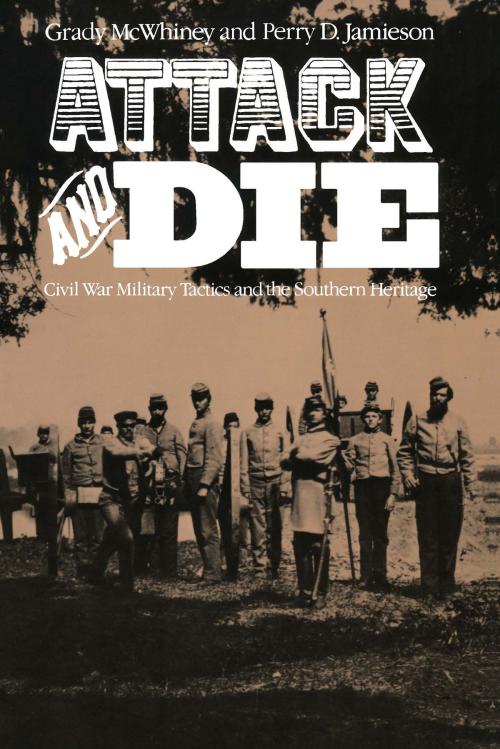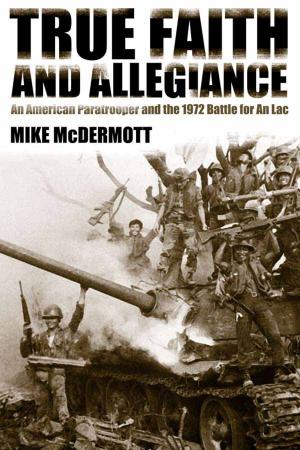Attack and Die
Civil War Military Tactics and the Southern Heritage
Nonfiction, History, Americas, United States, Civil War Period (1850-1877), Military| Author: | Grady McWhiney, Perry D. Jamieson | ISBN: | 9780817390167 |
| Publisher: | University of Alabama Press | Publication: | September 15, 2015 |
| Imprint: | University Alabama Press | Language: | English |
| Author: | Grady McWhiney, Perry D. Jamieson |
| ISBN: | 9780817390167 |
| Publisher: | University of Alabama Press |
| Publication: | September 15, 2015 |
| Imprint: | University Alabama Press |
| Language: | English |
“In the first twenty-seven months of combat 175,000 Southern soldiers died. This number was more than the entire Confederate military force in the summer of 1861, and it far exceeded the strength of any army that Lee ever commanded. More than 80,000 Southerners fell in just five battles. At Gettysburg three out of every ten Confederates present were hit; one brigade lost 65 percent of its men and 70 percent of its field officers in a single charge. A North Carolina regiment started the action with some 800 men; only 216 survived unhurt. Another unit lost two-thirds of its men as well as its commander in a brief assault.”
Why did the Confederacy lose so many men? The authors contend that the Confederates bled themselves nearly to death in the first three years of the war by making costly attacks more often than the Federals. Offensive tactics, which had been used successfully by Americans in the Mexican War, were much less effective in the 1860s because an improved weapon – the rifle – had given increased strength to defenders. This book describes tactical theory in the 1850s and suggests how each related to Civil War tactics. It also considers the development of tactics in all three arms of the service during the Civil War.
In examining the Civil War the book separates Southern from Northern tactical practice and discusses Confederate military history in the context of Southern social history. Although the Southerners could have offset their numerical disadvantage by remaining on the defensive and forcing the Federals to attack, they failed to do so. The authors argue that the Southerners’ consistent favoring of offensive warfare was attributable, in large measure, to their Celtic heritage: they fought with the same courageous dash and reckless abandon that had characterized their Celtic forebears since ancient times. The Southerners of the Civil War generation were prisoners of their social and cultural history: they attacked courageously and were killed – on battlefields so totally defended by the Federals that “not even a chicken could get through.”
“In the first twenty-seven months of combat 175,000 Southern soldiers died. This number was more than the entire Confederate military force in the summer of 1861, and it far exceeded the strength of any army that Lee ever commanded. More than 80,000 Southerners fell in just five battles. At Gettysburg three out of every ten Confederates present were hit; one brigade lost 65 percent of its men and 70 percent of its field officers in a single charge. A North Carolina regiment started the action with some 800 men; only 216 survived unhurt. Another unit lost two-thirds of its men as well as its commander in a brief assault.”
Why did the Confederacy lose so many men? The authors contend that the Confederates bled themselves nearly to death in the first three years of the war by making costly attacks more often than the Federals. Offensive tactics, which had been used successfully by Americans in the Mexican War, were much less effective in the 1860s because an improved weapon – the rifle – had given increased strength to defenders. This book describes tactical theory in the 1850s and suggests how each related to Civil War tactics. It also considers the development of tactics in all three arms of the service during the Civil War.
In examining the Civil War the book separates Southern from Northern tactical practice and discusses Confederate military history in the context of Southern social history. Although the Southerners could have offset their numerical disadvantage by remaining on the defensive and forcing the Federals to attack, they failed to do so. The authors argue that the Southerners’ consistent favoring of offensive warfare was attributable, in large measure, to their Celtic heritage: they fought with the same courageous dash and reckless abandon that had characterized their Celtic forebears since ancient times. The Southerners of the Civil War generation were prisoners of their social and cultural history: they attacked courageously and were killed – on battlefields so totally defended by the Federals that “not even a chicken could get through.”















